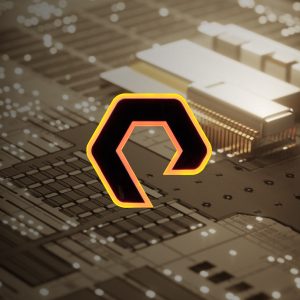What Is Triple-level Cell (TLC) Flash Memory and How Does It Work?
Triple-level cell (TLC) memory is a version of multi-level cell memory capable of storing three bits of information per memory cell. TLC allows organisations to lower their data storage costs by packing more data into the same footprint.
TLC is commonly used in flash memory, an electronic non-volatile computer memory storage medium that can be electrically erased and reprogrammed. The two main types of flash memory are NOR and NAND, named after the NOR and NAND logic gates.
What is TLC flash used for?
Common use cases for TLC flash include USB drives, enterprise- and consumer-grade solid-state drives (SSDs), and storage cards for digital cameras and mobile phones.
As computer chip manufacturers reached the scalability limits of 2D, or single-layer, memory cells, they created 3D NAND flash, which stacks memory cells vertically on the chip to enable higher storage densities at a lower cost per bit and also improves flash endurance.
Why is it called TLC?
TLC is an acronym for triple-level cell. Memory cells are the fundamental building blocks of computer memory. Toshiba introduced memory cells with three levels in 2009. Shortly thereafter, Samsung announced a type of NAND flash that can store three bits of information per cell and coined the term "Triple Level Cell" ("TLC"). Samsung Electronics began mass-producing TLCs in 2010 and first used them in their 840 Series SSDs.
How does TLC work?
Every flash memory microchip has hundreds of millions of cells, each of which, traditionally, has two possible states according to the presence, or not, of electrons on the microchip’s charge trap, with that state (one or zero) being the single bit of data stored in the cell on a single level in what’s known as single-level cell (SLC) memory.
TLC means three bits of information can be stored in each cell. This is made possible by charge traps with eight different potential electron levels resulting in eight different possible corresponding threshold voltages that can affect the stored binary value (one or zero) of each cell, which ultimately allows for three pieces of data to be stored in each cell instead of one.
Multi-level cell (MLC) memory refers to the use of cells that store two bits per cell via four charge values or levels. A two-bit MLC has a single charge level assigned to every possible combination of ones and zeros.
What are the benefits of TLC over SLC and MLC?
The primary benefit of TLC over SLC and MLC flash memory is lower cost per unit of storage due to the higher data density. Because TLC stores more bits per cell, it can triple the capacity of SLC and provide 1.5 times more storage than two-bit MLC.
SLC memory provides the benefits of higher write speeds, lower power consumption, and higher cell endurance. However, it costs more per megabyte of storage to manufacture because it stores less data per cell than MLC and TLC.
What are the drawbacks of TLC compared to SLC and MLC?
The drawbacks of TLC, compared to SLC and MLC, include:
Performance: TLC’s s eight voltage levels, in contrast to SLC's two levels and two-bit MLC's four levels, make it slower because each voltage level must be checked and translated back to bits when reading data.
Reliability: TLC’s eight voltage levels and the very small difference between them make the read process more sensitive to noise than SLC and MLC, leading to a higher bit error rate than SLC and MLC.
Endurance: Generally, the more data bits and charge levels a flash cell has, the fewer P/E or write cycles it can support. Thus, TLC flash has lower write endurance than both SLC and MLC flash. A planar TLC memory cell can usually sustain no more than 500 or 1,000 write cycles.
Balance performance and capacity with TLC SSDs
TLC flash memory stacks memory cells vertically to enable higher storage densities at lower costs per bit. TLC SSDs can store three bits of information per cell. While there are clear benefits of using TLC SSDs for data storage, including the lower cost and higher data density, there are also certain drawbacks, such as performance, reliability and endurance. Picking the right SSD for your needs will come down to your budget and data storage requirements. There’s no one-size-fits-all for data storage, and with the plethora of choices out there, you will need to do your own research and potentially try out different solutions before you arrive at the best possible choice.





